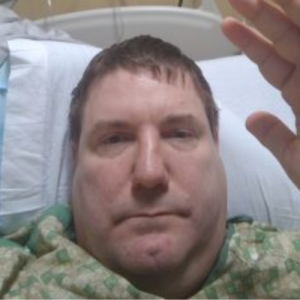As people age, their joints can become painful, sometimes severely affecting their quality of life. Joint replacements (arthroplasties) for the knee, hip, shoulder, and other joints are now common surgeries. Their successful outcomes can change lives.
Joint replacements are major surgeries however, with the risks that come with surgery. Infection in the surgical wound or joint itself is one of those risks.
 According to the American Academy of Orthopaedic Surgeons, about one patient out of every 100 who undergo a hip or knee replacement develops an infection. Regardless of where the infection is, it could lead to sepsis.
According to the American Academy of Orthopaedic Surgeons, about one patient out of every 100 who undergo a hip or knee replacement develops an infection. Regardless of where the infection is, it could lead to sepsis.
Sepsis, which was often called blood poisoning, is the body’s life-threatening response to infection. Like strokes or heart attacks, sepsis is a medical emergency that requires rapid diagnosis and treatment.
Sepsis and septic shock can result from an infection anywhere in the body, such as pneumonia, influenza, or urinary tract infections. Bacterial infections are the most common cause of sepsis. Worldwide, one-third of people who develop sepsis die. Many who do survive are left with life-changing effects, such as post-traumatic stress disorder (PTSD), chronic pain and fatigue, organ dysfunction (organs don’t work properly), and/or amputations.
Surgery is performed under sterile conditions. All objects introduced or implanted in the body are sterilized to minimize the risk of infection. However, there is always a small chance that bacteria can still appear on the implant or hardware and cause a bacterial infection. And since the bacteria are inside the implant instead of exposed directly to body tissue, it can be more difficult for your immune system to detect and fight the bacteria.
Why do joint replacements?
Surgeons perform total and partial joint replacements to replace damaged or diseased parts of the joint. Damage may be due to a trauma (motor vehicle accidents or falls, for example), or worn down by arthritis or other joint conditions.
Do joint replacements put you at risk for infection and sepsis?
Most people who undergo joint replacements heal well, without any complications. However, any type of surgery does increase your risk of developing an infection, which can in turn cause sepsis.
Risks include developing pneumonia following surgery or contracting a healthcare-acquired infection (HAI) during your stay in the hospital. As well, some people who undergo joint replacements may be older and/or have underlying disease conditions, such as diabetes or COPD, that may make them susceptible to infections.
Infection signs and symptoms
Implant and incision infections have similar signs and symptoms to other infections. They are also related to the location of the affected joint. Signs and symptoms include:
- Increasing redness around the incision
- Increasing pain
- Pus or other fluid coming from the incision
- Warmer than usual skin around the incision
- Increased pain around the incision
- Fever
- Fatigue
If an infection occurs within the joint, you will likely have increasing pain in the joint as well as some of the above symptoms. Infections in the incision usually occur within a few days of surgery, while the skin is healing. However, joint infections can occur days to years later. It is important to report any increase in pain in your artificial joint, especially any signs of an infection.
Treating the infection
The first step for treating an infection in an artificial joint is to administer intravenous (IV) antibiotics.
Sometimes the infection is too deep to respond to antibiotics. But if the surgery was recent, your surgeon may choose to clean out the joint surgically. This procedure, called debridement, allows the surgeon to remove any contaminated tissue and thoroughly clean out the joint, but keep the initial replacement. You may need intravenous antibiotics for about six weeks after the procedure.
Later infections, those that occur months or years after the implant, are more difficult to treat. Your surgeon may need to remove the implant. The joint is then thoroughly cleaned out. A temporary spacer is inserted into the joint so it can heal. Antibiotics treat the infection. Once the infection is completely gone, your surgeon removes the spacer and inserts a new artificial joint.
Preventing a joint replacement infection
You and your care team can reduce risk of infection. While arranging your surgery, speak with your surgeon about infection prevention procedures and what you can do to help reduce your risk. Your doctor may suggest:
- Preoperative testing for bacteria in your nasal passages by a nasal swab.
- Preoperative wash of your skin with a special soap at home before the surgery.
- Giving you antibiotics while you are in the operating room and for at least 24 hours after surgery.
- Recommending preventative (prophylactic) antibiotics before you have any procedures that could put you at risk for an infection. Examples include dental surgery or other surgical procedures.
Finally, eat a healthy diet. Malnutrition, not consuming enough nutrients for your needs, can lower your body’s ability to fight infection.
If you suspect sepsis, call 9-1-1 or go to a hospital and tell your medical professional, “I AM CONCERNED ABOUT SEPSIS.

Updated April 20, 2023.

 According to the American Academy of Orthopaedic Surgeons,
According to the American Academy of Orthopaedic Surgeons, 






























